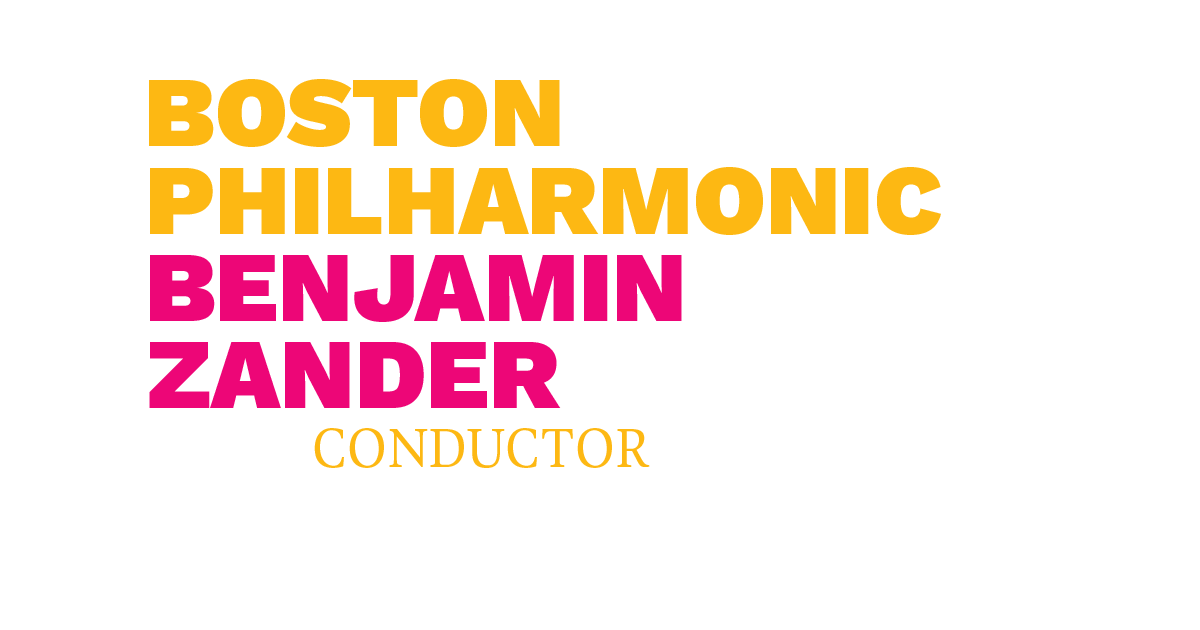
Boston Philharmonic Youth Orchestra 2019 Tour – São Paulo
Our thirty-six hours (or thereabout) in Rio de Janeiro were on and gone in the blink of an eye. After a short night (dinner early Tuesday morning and an 8:15 bus departure for the airport), we were off to our next stop, São Paulo.
One of the pleasures of going on a tour like this one is getting to know – even just a little bit – the players who comprise the BPYO. They’re a diverse lot in just about every way and their interests and experiences are correspondingly wide-ranging.
During a breakfast in Salvador, for instance, I sat at table with Dan Pooley, one of the orchestra’s percussionists, who compared his experiences in the BPYO with spending summers playing across the United States in drum corps competitions (they too have, it seems, some complementary virtues). He also (most impressively) explained the comprehensive rules of soccer in under one minute.
That same breakfast, Maria D’Ambrosio, one of the ensemble’s horn players, related her experiences playing in a video game orchestra in Boston. As she pointed out, the difference between that scene and the classical circuit is a bit stark: the audience for the former treats the experience as something of an event, dressing up, cheering the music from their favorite games, and otherwise behaving in a mood that’s rather more festive than not.
Another morning, she filled me in on some of the most interesting sights she has taken in on previous BPYO tours (which included an Argentine cemetery filled with cottage-sized crypts and a concert hall enclosed in a raised, steel bubble).
Then there’s Nathan Muz, one of the orchestra’s first bassoonists, as well as its excellent contrabassoonist, who’s also traveled widely with the BPYO and is attending Emory University in the fall to study urban planning.
During the plane ride to São Paulo, I sat next to Tristen Broadfoot, a 19-year-old clarinetist, and chatted with him about his impressions of Rio. There, like many of us, he was impressed with the city’s natural beauty. Like a few members of the orchestra, too, he spent part of Monday afternoon visiting one of Rio’s small beaches and also learned how to samba from some locals.
Highlights? “I thought the food was great and more accessible than in Salvador. Also, the hall was gorgeous.”
Any disappointments? “We didn’t get to see Jesus [the Cristo Redentor statue].”
Just one more reason to go back, I suppose.
The flight to São Paulo was short and sweet, the ride to the hotel not too long, and the food in the place quite good. Then we had a quiet afternoon in order to rest up for the night’s concert (a late one – it started at 9 p.m.) in the Sala São Paulo.
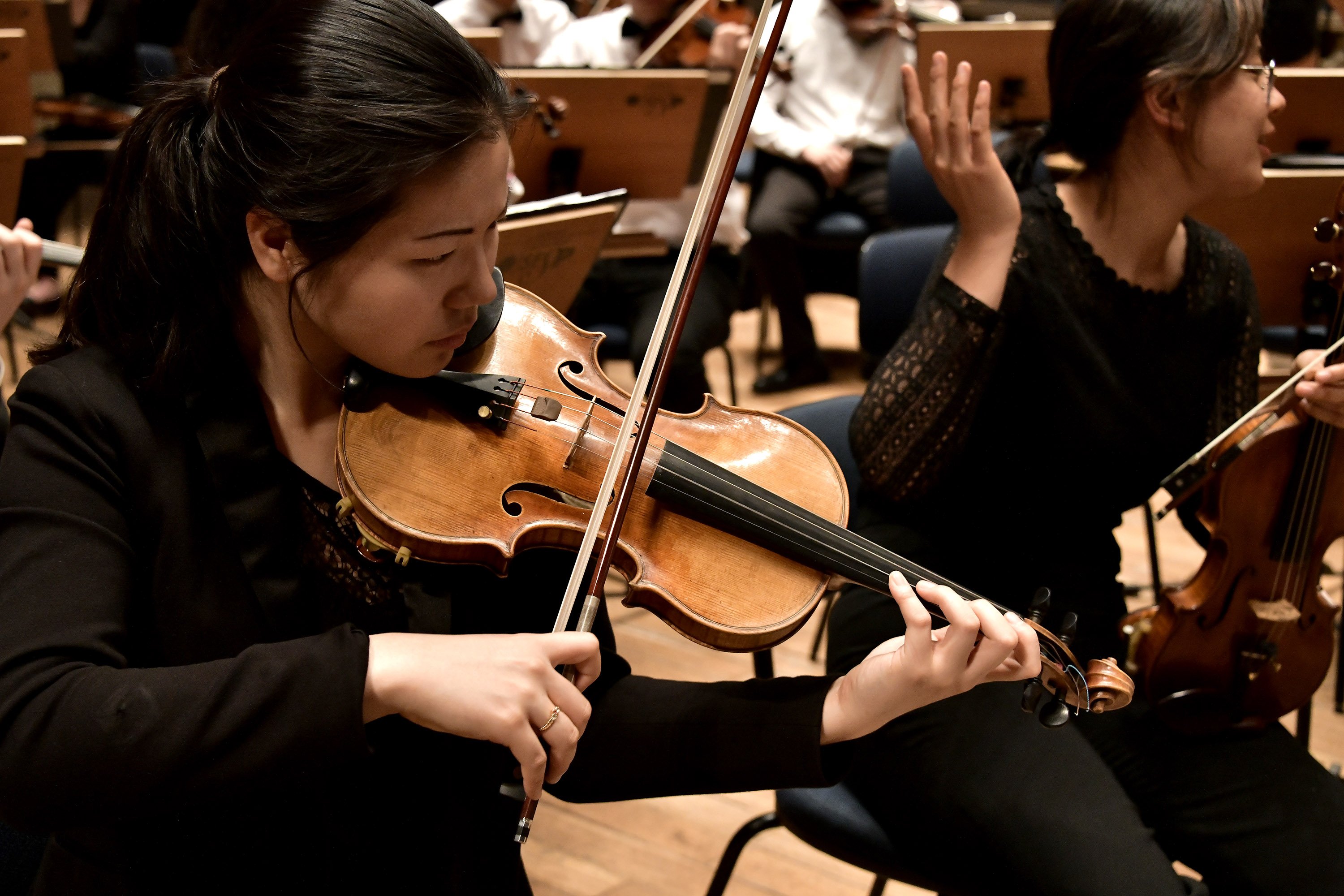
Concert mistress Mitsuru Yonezaki polishing a passage in the rehearsal.
The hall is one of the world’s great concert venues. It’s located in, of all places, a train station: the Estação Júlio Prestes. At this point, though, only part of the complex still serves that original purpose. The section the Sala occupies (which is called the Complexo Culturo Júlio Prestes) was renovated in the 1990s and is now home to the São Paulo Symphony Orchestra.
It’s located in a fairly sketchy part of town and there was a noticeable police presence as we exited the buses to head into the building. I learned later that, just across the street from the complex is a “village” of over 1000 crack addicts, the remnants of a now-discontinued effort by the Brazilian government to deal with the scourge of drug addiction in the city.
Walking into the Sala, then, was like coming into an oasis. The passageway to the hall – a wide, wooden walkway edged by stones and lined with potted trees – was immaculate and striking.
So was the theater itself.

BPYO rehearsal in the shoe box style theater.
Arranged in a classic, European-style shoe box fashion, the hall has seats behind the stage and two levels of balconies rising above the main floor. Pairs of ionic columns occur every fifteen feet or so on the sides and the upper-level boxes are, accordingly, broken into islands of eight seats each. Above, the ceiling is made up of rectangular wooden panels that can be raised or lowered to adapt the room’s sound to the forces on stage. Throughout, the Sala feels spacious and airy: it’s an aesthetic gem.
Its acoustic profile is similarly agreeable.
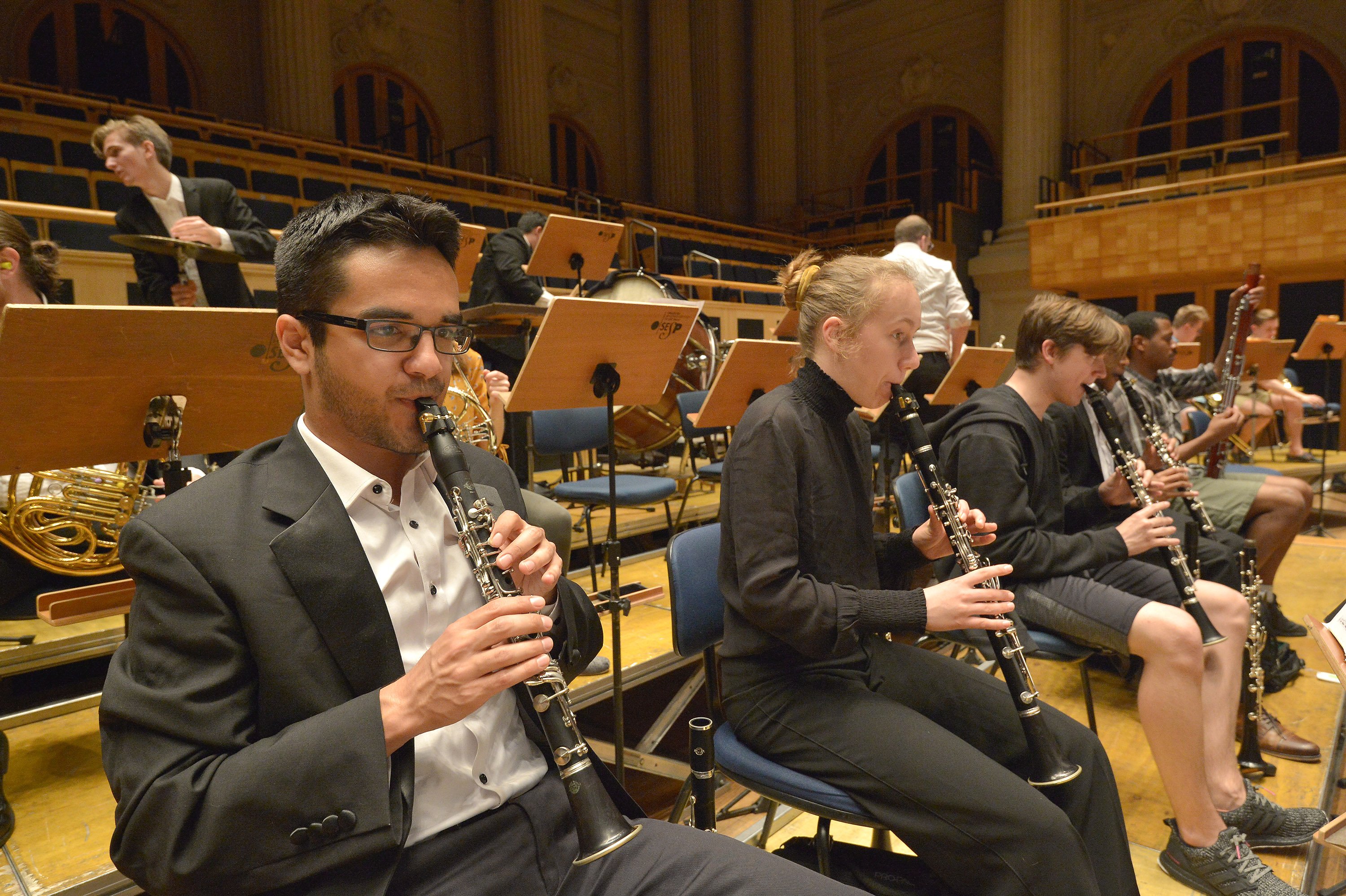
Clarinetists in rehearsal from left to right: Diego Bacigalupe, Tekla Nilsson, Tristen Broadfoot, and Paul Mardy.
On Tuesday, the Sala São Paulo brought a new dimension to the BPYO’s sound, transforming the ensemble’s tone in ways the venues in Salvador and even Rio hadn’t. In particular, the space brought a resonant glow to the group’s lower frequencies and a gleaming brightness to some of its upper ones. The result was an orchestra that sounded like a very different instrument than we had heard before, at once more portentous, yes, but also present and vibrant.
On Wednesday, there was a rehearsal (led by Benjamin Zander), then a snack break, and, after that, the BPYO gave one of the finest performances I’ve heard it present anywhere.
Clarice Assad’s Bonecos de Olindo, which opened the evening, was electrifying, its rhythms dancing playfully and the score’s lyrical episodes unfolding with charming character. Thanks to the hall’s acoustic, the BPYO’s tone had much more body and weight than the last time we heard the piece in Salvador; the piece left a much stronger impression as a result.
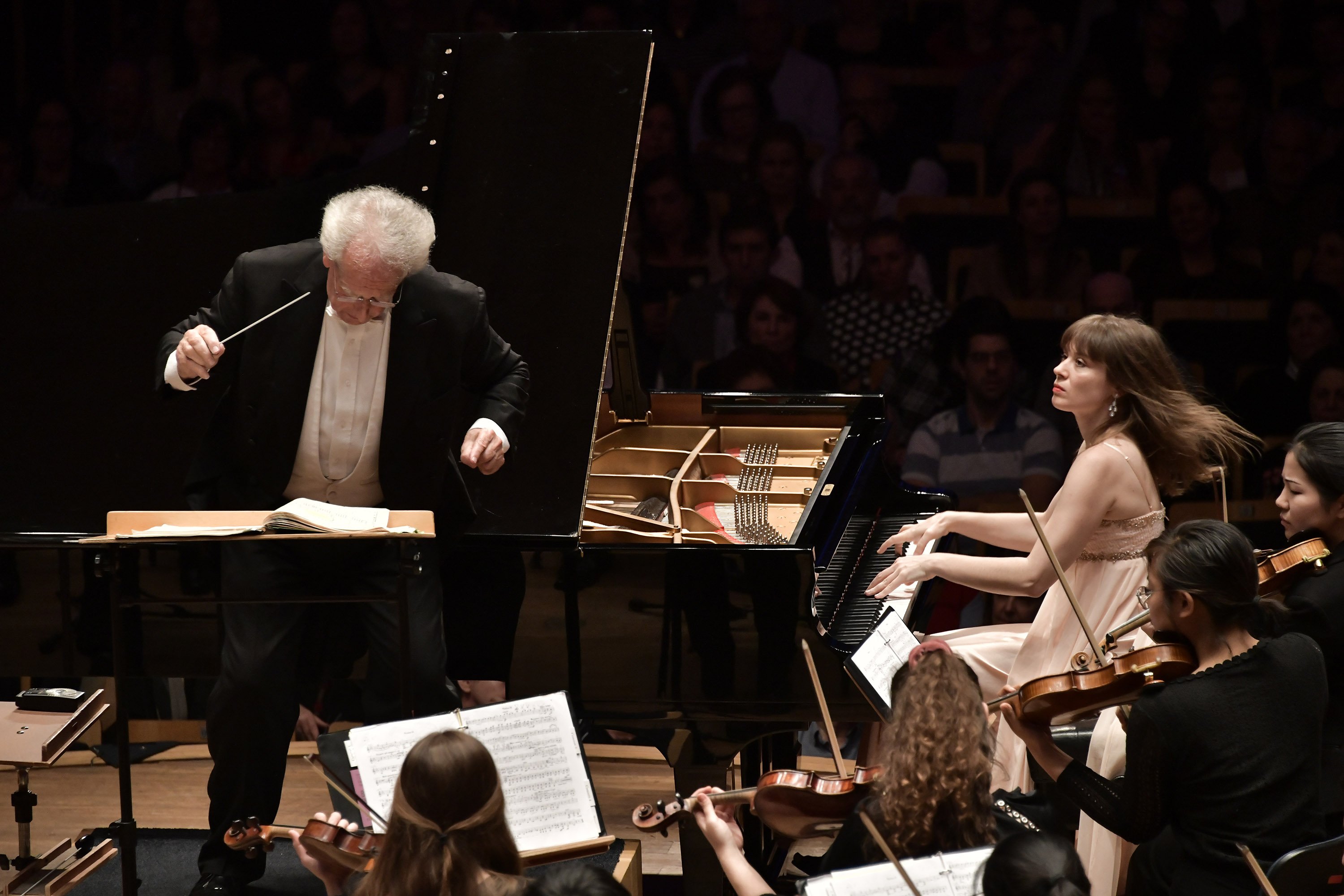
Anna Fedorova on piano.
The Rachmaninoff piano concerto that followed overflowed with passion and emotional tumult. About ten rows back and off to the side, I wasn’t in the best seat to judge balances. But from what I could tell, the keyboard spoke with terrific power and clarity. What’s more, being so close to the instrument, you could hear lots of the details in Anna Fedorova’s playing, like the wonderfully balanced voicing of her hands and the precise articulations of each finger – all of that on top of the qualities she already brings to her interpretation.
Zander led the orchestra in accompaniment that was exceedingly stylish and natural.
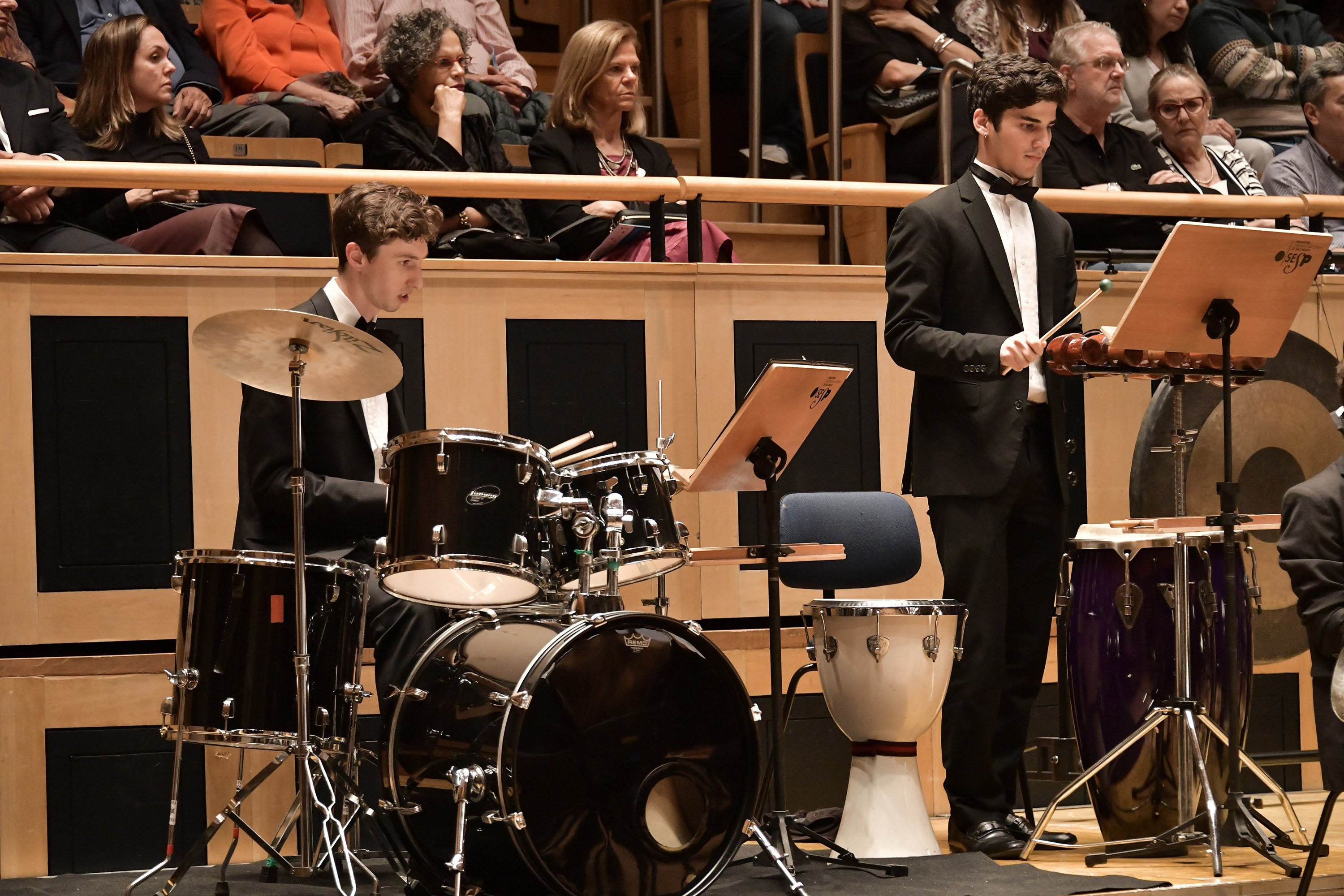
Percussionists in concert: Daniel Pooley and Gerson De La Rosa from Boston Conservatory.
After intermission, the Shostakovich opened with a monumental account of the first movement. It felt like the second was taken at a torrid clip though, after the concert, BPYO senior advisor Mark Churchill and several players I asked confirmed that it actually was a hair slower than usual – but so together, as a result, that it felt faster. Go figure.
The third got off to a slightly-unfocused start but soon gained its footing, and Zander did drive the finale harder than in either of the previous concerts. That gave it a sense of wildness that heightened the movement’s menacing undertones. It was, in all, a thoroughly visceral and thrilling account of the epic.
We had to end the concert by 11:30 because the hall’s parking garage closes at midnight and the area around the Sala is so dangerous. But there was time enough for an encore of “Nimrod,” which was warmly received by Tuesday’s packed house.

Concert in the Sala São Paulo
The next day didn’t let up much, though at least its events began in the afternoon: a conducting masterclass followed by the tour’s second side-by-side, this one with the Youth Orchestra of the State of São Paulo.
Both orchestras combined for the masterclass. In it, three young conductors worked through parts of Tchaikovsky’s Romeo & Juliet and Dvorak’s New World Symphony, while Zander provided them pointers and advice. For any who’ve ever wondered what, exactly, a conductor does (and this includes active orchestral musicians), it was an informative ninety-minute session.
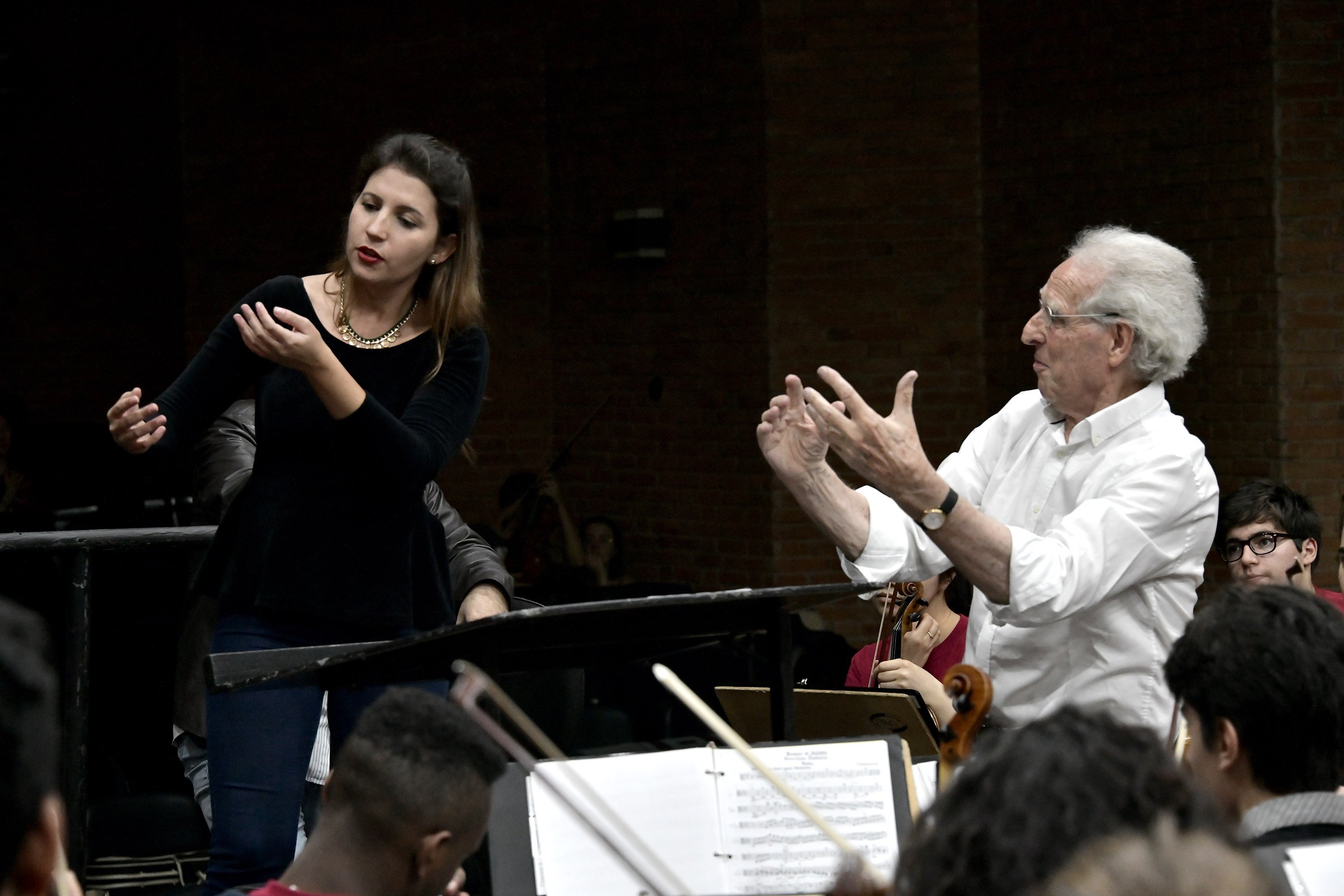
São Paulo conducting masterclass at Teatro Caetana de Campos
The first conductor, Paula, began Romeo & Juliet with graceful but vague gestures. The orchestra was clearly confused by her beat and, accordingly, played tentatively. “Conduct in four – they didn’t know when to come in [when you were in two]. Place each chord where you want it to be,” Zander told her. She did, and things began to tighten.
Later on, after a flaccidly phrased passage, he asked her what she thought the music should do in that section. “The first thing a conductor has to decide,” Zander told her, “is the shape of the music. Where will the music go?” Later on he continued in this vein: “The players look to you at every moment to tell them what the music is saying. So never do anything passive. Every moment, your hands have to tell them what to do.”
As her conducting became more precise and grounded, the ensemble responded with playing of increasing intensity and passion. “Now you’re conducting,” Zander told her after a few minutes. “Before you were just waving your arms.”
Zander, who’s a natural teacher, was hardest on the second conductor, José. He had rather fluid baton technique but his podium manner exuded a certain arrogance that Zander called out right away. “You lost the orchestra making these faces,” he said after the first phrase of the Dvorak’s slow movement. “Be natural, straightforward, authentic, true. Get rid of any kinds of histrionic acting. You have to be very natural. Orchestras can always see through a conductor’s poses – and they hate them.”
The last conductor, Jesiel, also had an unclear beat, and the New World first movement he conducted was ragged as a result. “Unless you have something to say that is better than what they [the orchestra] can do on their own, you’re wasting their time,” Zander told him. “You have to have something to give that they have no idea about. So do something special.” By fits and starts, as his leading became more defined, the reading became more sharply etched, rhythmically, and also breathed with a newfound sense of freedom.
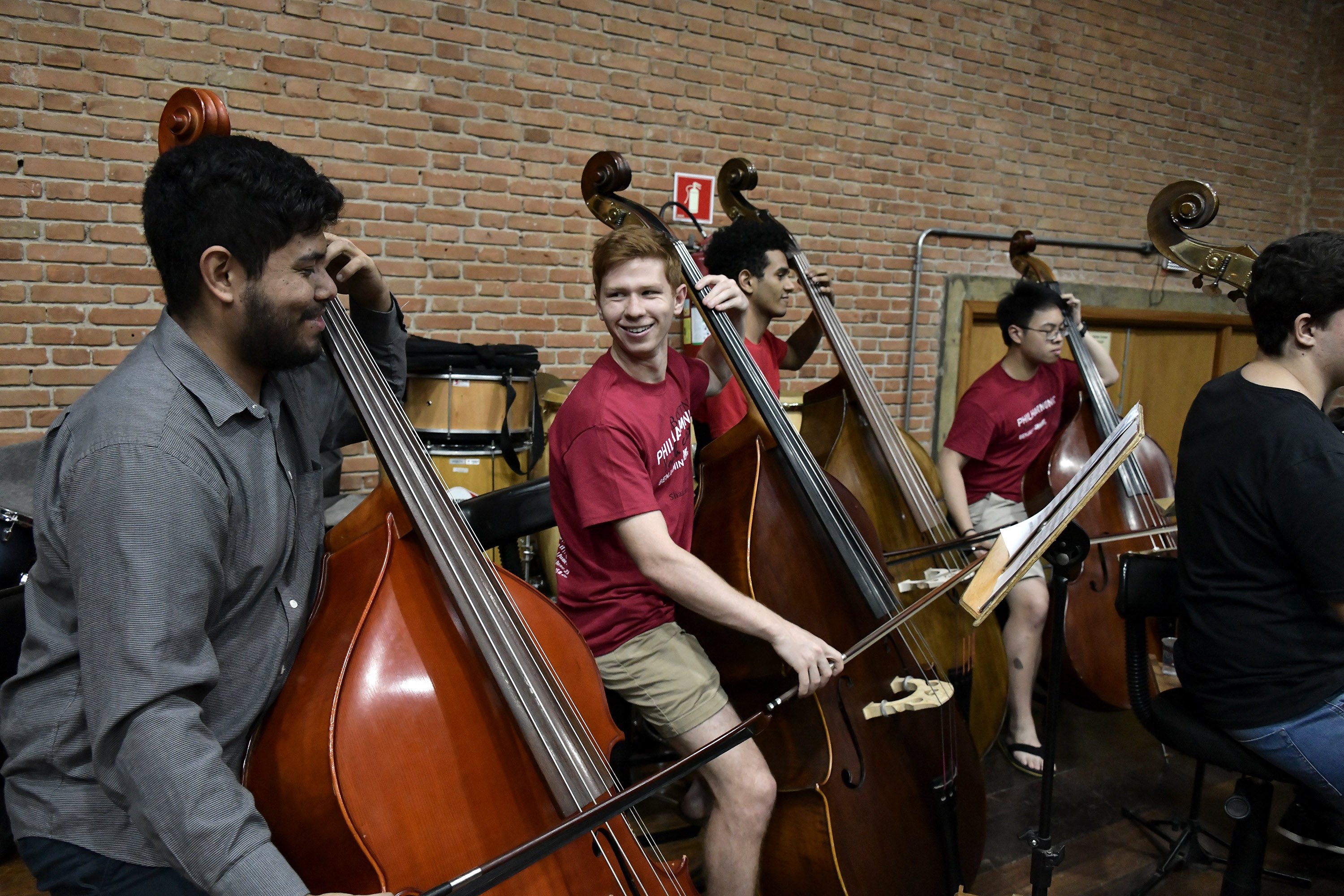
São Paulo side-by-side at Teatro Caetana de Campos
The side-by-side followed immediately and it ran a bit differently than Sunday’s. The combined forces played through four pieces: the finale of Dvorak’s New World Symphony, the Prelude to Act 1 of Wagner’s Die Meistersinger, Sousa’s The Stars & Stripes Forever, and Tchaikovsky’s Romeo & Juliet.
The Dvorak got a mighty, in-your-face rendition: with a big orchestra in a hall of hard surfaces (brick walls, concrete floors), it could hardly have been anything less.
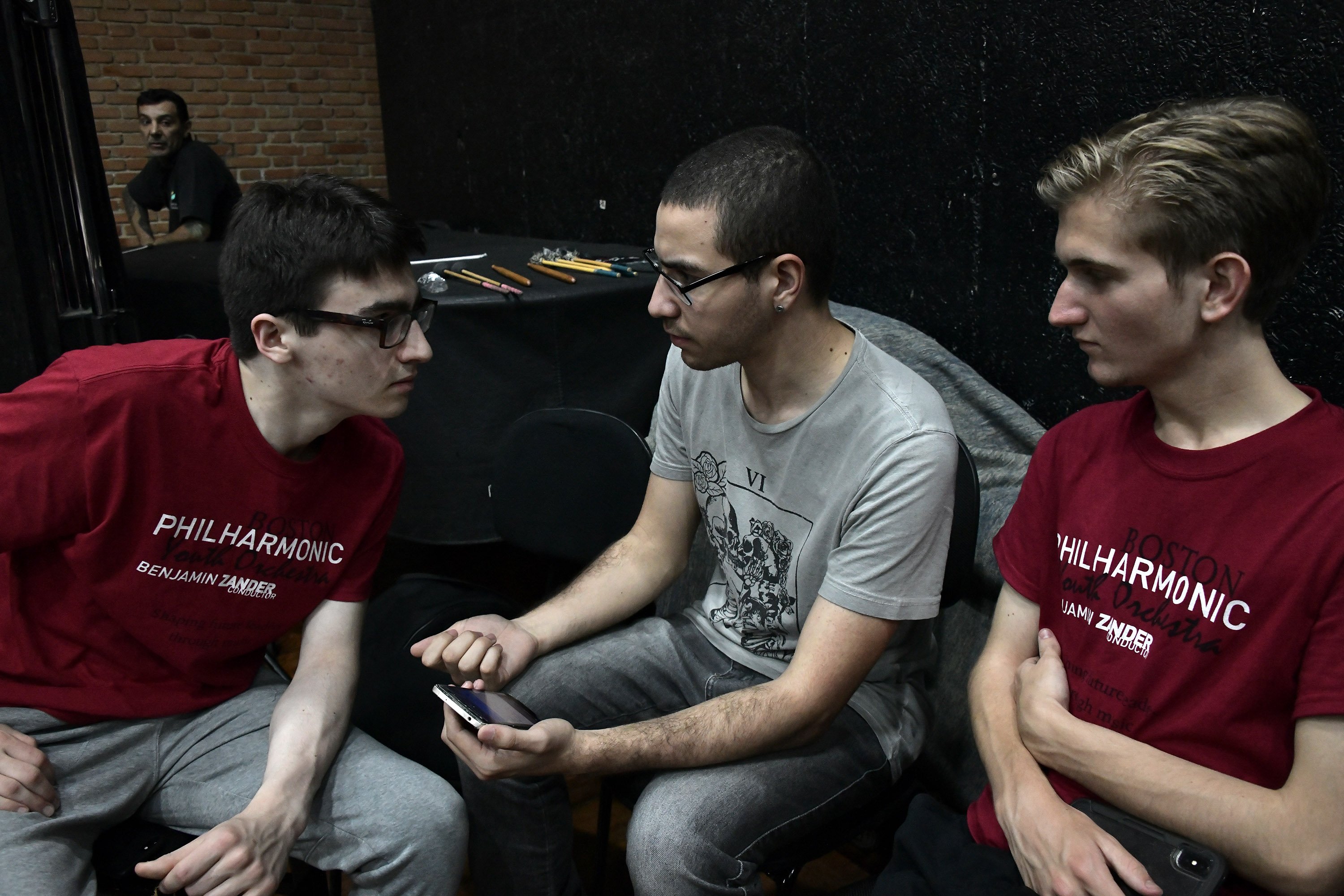
São Paulo side-by-side at Teatro Caetana de Campos
Zander began rehearsing the Wagner by unpacking its climactic section, in which three subjects – the broad “Meistersinger” motive, Walther’s theme (the “Prize Song”), and the apprentice’s music – are combined in a feat of compositional wizardry. Approaching the Prelude this way resulted in a particularly clear reading of the whole thing, at the end of which Zander marveled at the technical ingenuity of the score. “That’s the genius of Wagner,” he said. “Nobody was a greater composer than Wagner. He may have been a horrible person, but he was a brilliant composer.”
Then the orchestra played Romeo & Juliet with might and fervency (four pairs of cymbals provided the battle music an extra punch).
But the side-by-side’s musical highlight, for me, was Sousa’s Stars & Stripes Forever. The Brazilian players took to the piece with alacrity and the reading was filled with spirit. For the second run-through, Zander let several children who had traveled to the side-by-side from a favela about an hour away come up and conduct the piece, lifting them up one at a time for their turn in front of the orchestra. It was one of the sweetest and, to look at the kids’ faces, most wonder-filled scenes of the entire trip.

Benjamin Zander helps a little girl to conduct
That evening, a string quartet from the orchestra – violinists Veronica Pan and Greta Myatieva, violist Mira Williams, and cellist Zach Fung – gave a private performance at the home of Felipe Ferrer, a São Paulo resident and one of the tour’s donors; I tagged along to the event with them and Zander.
It was a lovely venue: a beautiful, spacious dwelling on a quiet São Paulo street with dining and living rooms opening onto a patio that gave way to a pristinely-manicured lawn framed by trees and revealing – for the only time I saw them in São Paulo – stars overhead. What’s more, the food was terrific, company excellent, conversation engaging, and quartet playing superb.
Greta introduced each piece (movements from quartets by Haydn and Mozart) and opened the floor to questions from the musically-savvy audience of about thirty invited guests. Zander gave biographical introductions for each player, spoke about the orchestra and its work, and also did a little coaching with the chamber group. In all, it was a charming, invigorating way to pass an evening.
We returned to the hotel after midnight – this has been a tour of late nights – for a few hours of rest before departing on the next leg of our journey: a trek north and a bit west to the cities of Ribeirão Preto and Campinas.
Photos by: Paul Marotta
